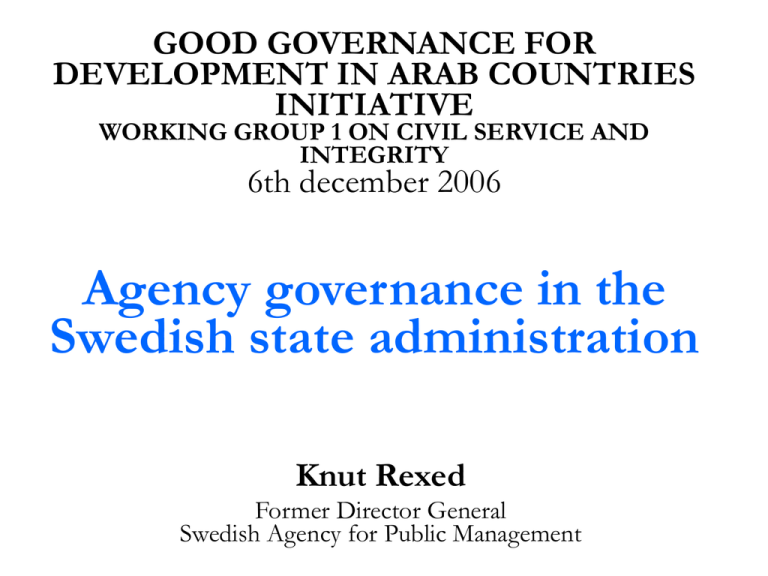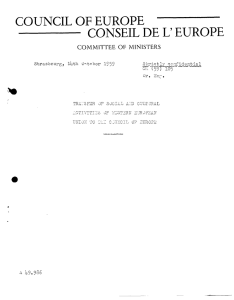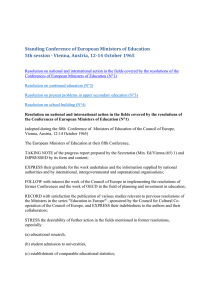Agency governance in the Swedish state administration GOOD GOVERNANCE FOR
advertisement

GOOD GOVERNANCE FOR DEVELOPMENT IN ARAB COUNTRIES INITIATIVE WORKING GROUP 1 ON CIVIL SERVICE AND INTEGRITY 6th december 2006 Agency governance in the Swedish state administration Knut Rexed Former Director General Swedish Agency for Public Management The four public powers in Sweden The Parliament adopts all laws, approves all taxes and allocates all revenues The Government presents proposals to the Parliament and issues instructions to Government agencies The Administration executes all instructions and applies the laws The Administrative Courts try all appeals against the decisions of Government agencies & RS The public administration in Sweden No central authority A small government office serving the 22 ministers (about 4 000 employees in 10 ministeries) More than 200 separately managed government agencies 21 regional councils and 280 local authorities that are not under direct government control & RS The limits to the government’s powers All government decisions have to be taken by the Council of Ministers A single minister cannot take any decision except when specifically authorised by the Council of Ministers All instructions to the government agencies have to be in writing All instructions to the government agencies have to made public, unless covered by the Secrecy Act The government is forbidden to interfere in an agency’s interpretation or application of the law & RS The format for agency governance The Agency Act provides a set of general rules A permanent instruction for each agency provides the mission and framework An annual instruction for each agency provides monetary resources, goals and targets Ad hoc instructions provides specific additional tasks Agencies are evaluated on an ad hoc basis & RS After four decades of management reforms: All management decisions are devolved to the agency concerned, including human resource management An agency can have an Executive Board with external members Agencies without an Executive Board are run by their Director General All agencies provide an annual report on results and on resource use Director Generals are appointed for a term of six years with no guarantees for continued employment after that & RS Human Resource Management in Government Agencies Employment and conditions are regulated by the normal labour laws (including a general law on employment protection) Each agency recruits and trains its own employees Agencies set the wages for their employees and co-operate through the State Employer’s Agency Agencies only receive a standard compensation for wage and other price increases & RS How was it possible? Continuous change through an reform process where each step was evaluated before the next step was taken Strong civil service values are thoroughly internalised, leading to strong reactions against any maluse of public authority A corps of professional public managers with clear incentives to achieve results A free press with free access to public documents provides an efficient monitoring, leading to a very low level of corruption Strong trade unions for public employees that were partners in the reforms & RS Today’s main challenges Creating a networked administration where agencies, regional councils and local authorities work together in serving the citizens Reviewing and simplifying the agency structure Improving the abilility to set effective and appropriate result targets Improving the procedures for the selection of Director Generals & RS & RS


